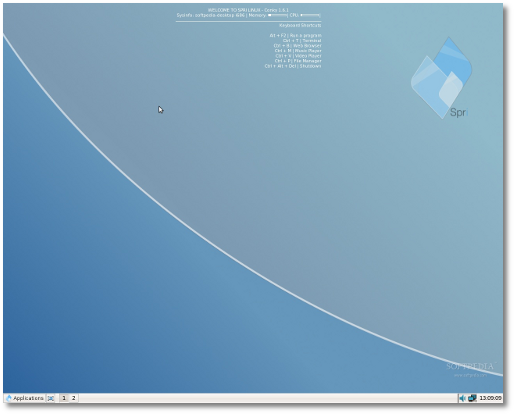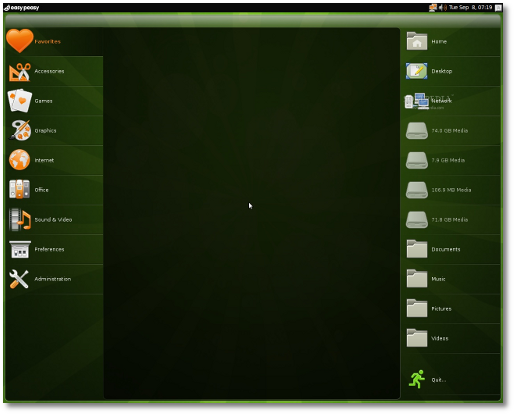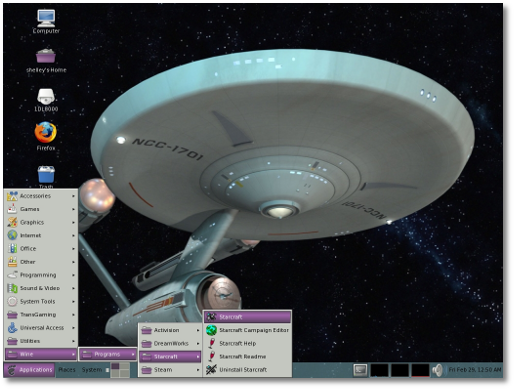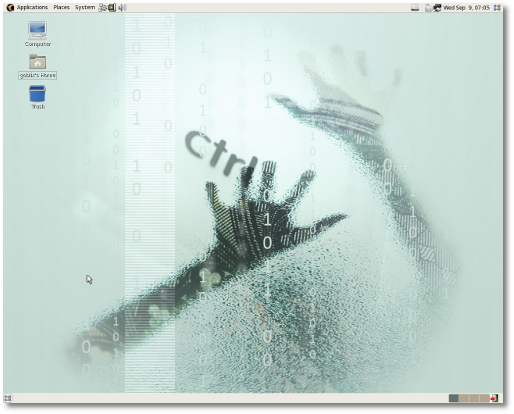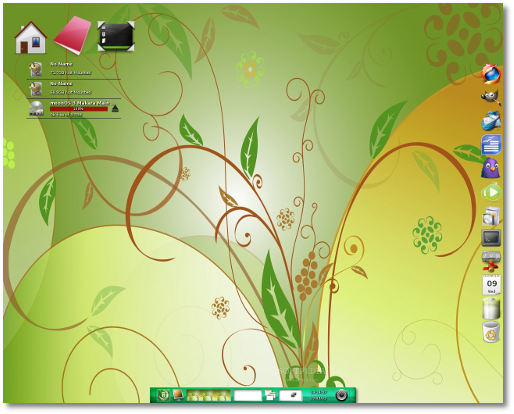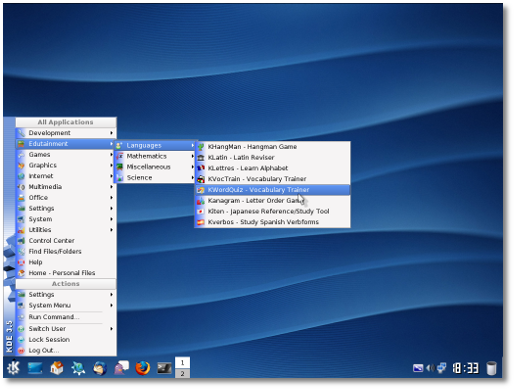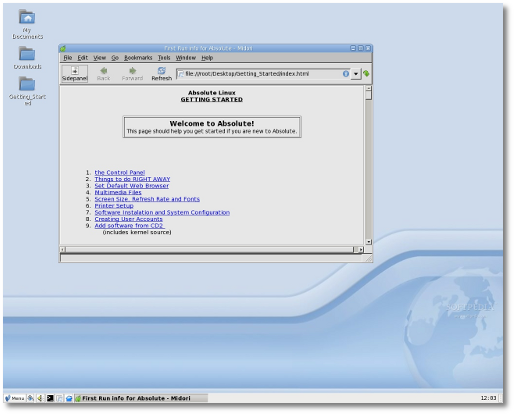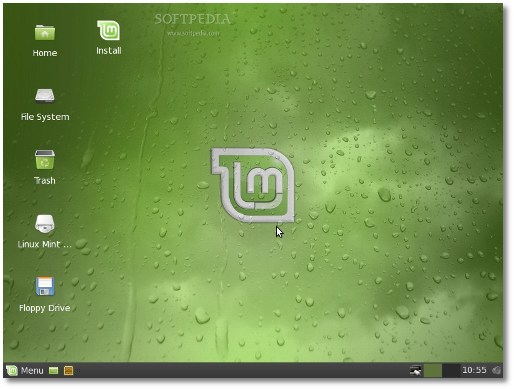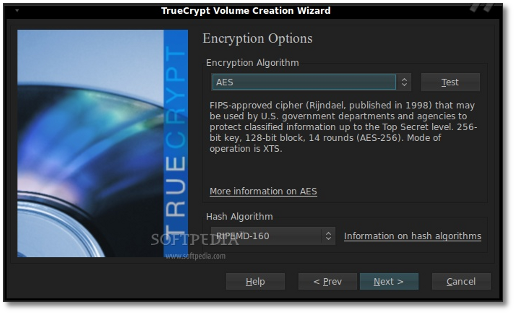Welcome to the 62nd issue of Softpedia Linux Weekly!
We start this weekly with a beta testing of the Spri Linux Beta distribution. The following Linux distributions were announced last week: Easy Peasy 1.5, CRUX 2.6, GoblinX 3.0 GNOME Edition, moonOS 3, Bluewhite64 Linux 13.0, Absolute Linux 13.0 and Linux Mint 7 XFCE Edition. In other news: the new Linux Kernel 2.6.31 has support for USB 3.0, the release candidate of GNOME 2.28.0 is available for download and the new artwork in Ubuntu 9.10 is unveiled. An in-depth review of the TrueCrypt 6.2a application is also present in this edition. The weekly ends with the video clip of the week, the latest Linux distributions released/updated last week and the development releases.

Summary:
From the article: Spri Linux is a lightweight Ubuntu remix that gears toward speed and uses the IceWM window manager to achieve that goal. Clearly, IceWM requires less resources than its bigger siblings, like GNOME and KDE, it's even lighter than XFCE, in fact you could probably put it in the same category with LXDE. Having that Ubuntu base means that Spri Linux benefits from the well-known hardware compatibility, package management and support that the popular distro has amassed in time.
Because of the small quantity of preinstalled software, the Applications menu is quite simple and small. The Logout button will throw you off a bit, since it's a button by itself, but you can also get the other shutdown options in a menu by using the small arrow at the right of this button. I think that people shut down their computer more often than they log off, so a Shutdown button would be more useful. New users will have a problem with IceWM's menu, because it doesn't automatically update when installing new applications, these will have to be added manually. The same application menu is available when right-clicking the desktop, which may be useful, but it also means that you can't create launchers or paste files on the desktop too easily – another rough spot that a beginner would face.
Read the entire article here.
 Linux distributions announced last week:
Linux distributions announced last week:
 On September 8th, Jon Ramvi had the pleasure to announce the immediate availability of Easy Peasy 1.5, an Ubuntu-based Linux distribution designed for netbooks. Among the new features brought by Easy Peasy 1.5, we can mention the support for many new netbooks, 3D desktop effects, faster startup times, a new look, and many more.
On September 8th, Jon Ramvi had the pleasure to announce the immediate availability of Easy Peasy 1.5, an Ubuntu-based Linux distribution designed for netbooks. Among the new features brought by Easy Peasy 1.5, we can mention the support for many new netbooks, 3D desktop effects, faster startup times, a new look, and many more.
Highlights of Easy Peasy 1.5:
· Based on Ubuntu 9.04; · Linux kernel 2.6.30 (optimized for netbooks); · New artwork; · Added support for more netbooks; · A hybrid image is now available for download; · Ability to install from a Macbook; · USB installation support; · EXT4 is now the default filesystem; · Banshee replaces Songbird, as the default music player; · Ability to run 3D applications on a 3D desktop; · The hard-drive footprint is now smaller; · OpenOffice.org office suite 3.1; · Updated many applications; · Ubuntu security updates are now available for Easy Peasy users; ...and many annoying bugs were fixed!
Download Easy Peasy 1.5 right now from Softpedia.

 Also on September 8th, the CRUX development team announced the immediate availability of CRUX 2.6. Many packages have received updates, and the included Linux kernel has been brought to version 2.6.30.5 (not exactly current, as the last stable version of the Linux kernel is 2.6.30.6). The toolchain, a very important part of this distribution, as you will be using those tools to build your system, includes glibc 2.10.1, gcc 4.4.1 and binutils 2.19.1. On the graphical side of the desktop, Xorg is now at version 7.4.
Also on September 8th, the CRUX development team announced the immediate availability of CRUX 2.6. Many packages have received updates, and the included Linux kernel has been brought to version 2.6.30.5 (not exactly current, as the last stable version of the Linux kernel is 2.6.30.6). The toolchain, a very important part of this distribution, as you will be using those tools to build your system, includes glibc 2.10.1, gcc 4.4.1 and binutils 2.19.1. On the graphical side of the desktop, Xorg is now at version 7.4.
Many of the utilities contained in e2fsprogs have been chucked out and replaced with their util-linux-ng counterparts, so you will probably notice the new fsck, findfs, blkid, uuidd, uuidgen utilities and the changed libuuid and libblkid libraries. Also, libusb has been updated to version 1.0, but a compatibility package for 0.1 remains, and rdate has been replaced by openrdate.
Download CRUX 2.6 right now from Softpedia.

 Also on September 8th, Flavio Pereira de Oliveira announced the 3rd release of his popular Slackware-based Live CD Linux distribution, GoblinX GNOME, also known as G:Noblin. This new, stable version brings GNOME 2.24 as the default desktop environment and includes translations in many languages. But the most important feature in G:Noblin 3.0 is definitely the netbook interface, especially designed by the GoblinX team, based on Ubuntu Netbook Remix with some ideas from Foresight Linux.
Also on September 8th, Flavio Pereira de Oliveira announced the 3rd release of his popular Slackware-based Live CD Linux distribution, GoblinX GNOME, also known as G:Noblin. This new, stable version brings GNOME 2.24 as the default desktop environment and includes translations in many languages. But the most important feature in G:Noblin 3.0 is definitely the netbook interface, especially designed by the GoblinX team, based on Ubuntu Netbook Remix with some ideas from Foresight Linux.
Highlights of G:Noblin 3.0:
· GNOME 2.24 desktop environment; · Netbook interface based on Ubuntu Netbook Remix; · Better support wireless devices; · The netbook applications and interface were upgraded; · Various libraries and packages were upgraded; · Updated X.Org Server; · Added Vuze and Java Runtime Environment (JRE); · Added support for the xz extension (the new Slackware package format); · Added a script to easily install Adobe's Flash Player plugin; · Fixed various errors and bugs; · Added a brand-new boot splash theme; · Many other improvements and modifications...
Download G:Noblin 3.0 right now from Softpedia.

 On September 9th, the moonOS developers released the third version of their lightweight Linux operating system. Dubbed "Makara," MoonOS 3 is based on Ubuntu 9.04 (Jaunty Jackalope), and uses the Enlightenment 0.16.999.60 desktop environment.
On September 9th, the moonOS developers released the third version of their lightweight Linux operating system. Dubbed "Makara," MoonOS 3 is based on Ubuntu 9.04 (Jaunty Jackalope), and uses the Enlightenment 0.16.999.60 desktop environment.
Highlights of moonOS 3:
· Linux Kernel 2.6.28; · Xorg 7.4; · Firefox 3.5.2, including the Moonlight plugin; · OpenOffice.org 3.1.1; · Pidgin 2.6.1; · moonSystem protects distribution files from Ubuntu package upgrades; · moonControl improvements; · moonGrub improvements; · moonSoftware was added; · EFL Keys was added; · Eye of GNOME was replaced with GPicview.
Download moonOS 3 right now from Softpedia.

 Also on September 9th, Attila Crăciun announced the release of Bluewhite64 Linux 13.0, a Slackware-based distribution that runs natively on AMD/Intel's 64-bit processors. Many changes and upgrades have been made, and, along with those, come new features and improvements over the older Bluewhite64 12.2.
Also on September 9th, Attila Crăciun announced the release of Bluewhite64 Linux 13.0, a Slackware-based distribution that runs natively on AMD/Intel's 64-bit processors. Many changes and upgrades have been made, and, along with those, come new features and improvements over the older Bluewhite64 12.2.
A generic 2.6.30.5 Linux kernel has been added to the distribution, but many of its components have been configured for compilation as modules. If you want to use it and the drivers that are needed for your hardware reside in modules, you will have to create an initrd file yourself. Also, if you want to use 32-bit programs, you will need to install the IA32 support libraries that are located in the /extra/ia32-emulation directory on the install media.
Download Bluewhite64 13.0 right now from Softpedia.

 On September 10th, Paul Sherman announced the release of Absolute Linux 13.0, bringing this lightweight Slackware derivative up-to-date. Because of the important system-level changes that happened in Slackware 13, the Absolute Linux developers had a hard time making all their customizations work with this new base. However, they managed to get their IceWM and PCManFM modifications in sync, and all the script utilities working, for this 13.0 release of Absolute Linux 13.0.
On September 10th, Paul Sherman announced the release of Absolute Linux 13.0, bringing this lightweight Slackware derivative up-to-date. Because of the important system-level changes that happened in Slackware 13, the Absolute Linux developers had a hard time making all their customizations work with this new base. However, they managed to get their IceWM and PCManFM modifications in sync, and all the script utilities working, for this 13.0 release of Absolute Linux 13.0.
Along with the updated customizations, many bugs were fixed, like the SVG file support in Mozilla Firefox, which was switched from using its built-in SVG decoding library to employing the librsvg plugin. Also, PCManFM doesn't crash anymore, the sources of those snags being traced to thumbnail rendering. Furthermore, integration between the ROX desktop and PCManFM has been improved, adding, along the way, support for quick thumbnail creation and image resizing.
Download Absolute Linux 13.0 right now from Softpedia.

 On September 13th, Clement Lefebvre announced the release of the Linux Mint 7 "Gloria" XFCE edition, a community-maintained modification of the standard Linux Mint distribution that uses the XFCE desktop environment by default. There are a lot of changes in this new version, and, among the base packages, you will find the Linux 2.6.28 kernel, Xorg 7.4 and XFCE 4.6. The distribution-specific tools have received some attention.
On September 13th, Clement Lefebvre announced the release of the Linux Mint 7 "Gloria" XFCE edition, a community-maintained modification of the standard Linux Mint distribution that uses the XFCE desktop environment by default. There are a lot of changes in this new version, and, among the base packages, you will find the Linux 2.6.28 kernel, Xorg 7.4 and XFCE 4.6. The distribution-specific tools have received some attention.
MintInstall now presents the user with a "Featured applications" window that lists popular pieces of software that are not currently installed, making it easier for new users to put common programs onto their systems. Also, the apt-cache is now preinstalled, so they don't have to refresh the package lists immediately after installing the operating system, although it is advisable that one does update the lists to make sure that they receive the latest security fixes.
Download Linux Mint 7 XFCE right now from Softpedia.
· Linus Torvalds, the father of Linux, announced on September 9th the immediate availability of Linux kernel 2.6.31, a version that brings initial support for the upcoming USB 3.0 devices, Kernel Mode Setting support for ATI Radeon, initial support for NFS 4.1, and many other goodies for all Linux users around the world. Read more about it here.

· The GNOME developers are optimistic about the GNOME 2.28.0 Release Candidate (2.27.92), they worked for 16 days on it and then made it available for public scrutiny on September 9th. The changelogs have grown considerably shorter than those of the beta releases, but that is only natural, because GNOME is heading for a stable 2.28 release, which should be here by the end of this month. Read more about it here.

· On September 11th, we decided to post for our readers, especially Ubuntu users, some of the community themes and icons that would be present in the upcoming Ubuntu 9.10 (Karmic Koala) operating system, due for release on October 29th. The new themes are: Kin, Night Impression, Impression, Hanso, Turrican and the Breathe icon theme. Read more about it here.

 Review of the Week: Truecrypt 6.2a
Review of the Week: Truecrypt 6.2a
From the review: If you ever kept important files on a USB drive, then you certainly thought about the prospect of misplacing that flash disk and exposing the contents of those files to unwanted people. Even when sending data over the Internet, no one can guarantee that they won't be hijacked during the passage from server to client. Truecrypt is an application that can add an extra layer or two of security to your data storage. It allows you to create encrypted containers that appear to be simple files filled with random data, scramble partitions or whole disks and even protect your operating system by installing it onto an encrypted partition.
If you want to keep your files encrypted, you probably won't find another free-as-in-beer solution that is as easy-to-use and as feature-filled as Truecrypt.
Read the entire review here.

 Video Clip of the Week: Linux Multimedia Studio Demo
Video Clip of the Week: Linux Multimedia Studio Demo
· For this week, we've posted a video clip that shows a track put together in Linux using LMMS or Linux MultiMedia Studio. All sounds are generated internally and LADSPA plugins are used for all processing. The video has three minutes and 38 seconds and it was posted by flujotech. Enjoy!
· Lighthouse Pup 4.4.2 · Masonux 9.04-20090821
 Distributions Updated Last Week:
Distributions Updated Last Week:
· Debian GNU/Linux 5.0.3 · Astaro Security Linux 6.314 · ttylinux 9.0 · Tiny Core Linux 2.3.1 · Slack Mini Server 1.4.6 · Absolute Linux 13.0.1 · Webconverger 5.5 · gNewSense 2.3
· LliureX 9.09 RC · Spri Linux Live Beta 2.1 · openSUSE Linux 11.2 Milestone 7 · Hymera 20090910 · Parted Magic 4.5 RC1
See you again next Monday, September 21st, for another issue of Softpedia Linux Weekly.
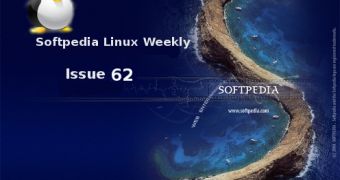
 14 DAY TRIAL //
14 DAY TRIAL // 
